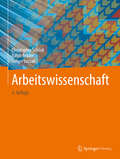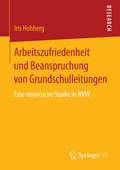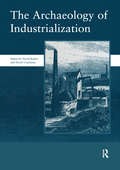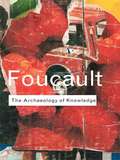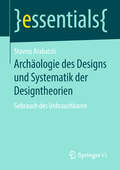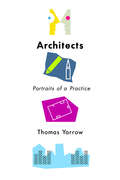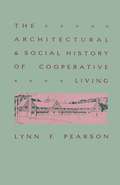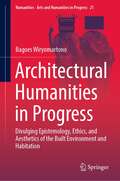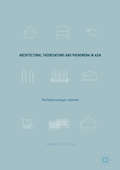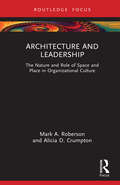- Table View
- List View
Arbeitsweltbezogene Gesundheitspolitik bei atypischer Erwerbsarbeit: Eine Rekonstruktion von Gestaltungschancen zur Reduzierung von Ungleichheit im Arbeitsleben
by Jana YorkJana York leistet in gerechtigkeitstheoretischer Perspektive einen Beitrag zur Weiterentwicklung arbeitsweltbezogener Gesundheitspolitik, insbesondere für atypisch Beschäftigte. Zentral ist für die Autorin die Frage, welche Visionen zur Verbesserung arbeitsweltbezogener Gesundheitspolitik für prekär Beschäftigte existieren. Arbeitsweltbezogene Gesundheitspolitik mit ihren tradierten, vornehmlich am Normalarbeitsverhältnis orientierten Strategien stößt bei der Gewährung von gesundheitsrelevanten Verwirklichungschancen in zunehmend pluralisierten Erwerbsarbeitskonstruktionen an Grenzen, was zu einer Konsolidierung bereits bestehender gesundheitlicher Ungleichheitslagen in der Arbeitswelt führt und als zentrale Herausforderung für Public Health expliziert werden kann.
Arbeitswelten in Bewegung: Arbeit, Technik und Organisation in der „nachindustriellen Gesellschaft“
by Christian Schilcher Mascha Will-ZochollDas Buch bezieht sich auf die Diskussion um den Wandel von Arbeit als einer Abkehr von industriell geprägten gesellschaftlichen Zusammenhängen hin zu neueren Arbeitsformen wie Dienstleistungs- oder Wissensarbeit. Die Autorinnen und Autoren des Bandes zeigen, dass sich Veränderungen von Arbeit, Organisation und Technik als vielschichtige, mehrdeutige und häufig ambivalente soziale Prozesse vollziehen und leisten damit Beiträge zu einer differenzierten und kritischen Analyse moderner Arbeitsgesellschaften.Mit Beiträgen von Christian Schilcher und Janis Diekmann, Sebastian Remer, Andreas Kaminski, Hartmut Hirsch-Kreinsen, Sabine Pfeiffer, Mascha Will-Zocholl und Peter Kels.
Arbeitswerte der Generation Y im internationalen Vergleich: Analyse der Heterogenität arbeitsbezogener Werte nach den GLOBE-Kulturclustern (BestMasters)
by Sandra BrinkmannDie Untersuchung kultureller Unterschiede zwischen Mitarbeitern veranlasste Sandra Brinkmann zu der Fragestellung, ob arbeitsbezogene Werte der Generation Y im internationalen Vergleich variieren. Mithilfe der zehn Kulturcluster der GLOBE-Studie analysiert die Autorin arbeitsbezogene Werte aus 52 Ländern und zieht Rückschlüsse über die Heterogenität der Arbeitswerte dieser Generation. Insgesamt kann sie trotz Hinweisen auf eine zunehmend „globale“ Generation Y eine statistisch höchst signifikante Heterogenität der Arbeitswerte zwischen den Kulturclustern nachweisen.
Arbeitswissenschaft (Springer-Lehrbuch)
by Holger Luczak Ralph Bruder Christopher SchlickKomplexität und Dynamik prägen die heutige Arbeitswelt und erzeugen hohe Anforderungen an die Leistungs-, Innovations- und Wandlungsfähigkeit der Unternehmen und ihrer Beschäftigten. Die Gestaltung effizienter und produktiver Arbeitsprozesse, in denen Mitarbeiterinnen und Mitarbeiter schädigungslose, erträgliche und zumutbare Arbeitsbedingungen vorfinden, Handlungsspielräume entfalten, ihre Kompetenzen einbringen und in Kooperation mit anderen weiterentwickeln können, gewinnt deshalb zunehmend an Bedeutung. Das Buch erläutert als arbeitswissenschaftliches Lehrbuch und Nachschlagewerk die wesentlichen Modelle und Methoden zur Analyse, Gestaltung und Optimierung von Arbeitsprozessen im Hinblick auf die genannten Kriterien. Hierbei werden zentrale Gegenstandsbereiche arbeitswissenschaftlicher Forschung und Lehre wie Arbeitspersonen, Arbeitsformen, Betriebs- und Arbeitsorganisation, Gruppen- und Teamarbeit, Arbeitszeit, Arbeitswirtschaft, Arbeitsschutz, betriebliche Gesundheitsförderung, Arbeitsumgebung sowie Ergonomie fachsystematisch dargestellt und anhand von Gestaltungsbeispielen praxisnah vermittelt. Die vierte Auflage wurde vollständig überarbeitet.
Arbeitswissenschaft
by Christopher M. Schlick Ralph Bruder Holger LuczakDie Gestaltung effizienter und produktiver Arbeitsprozesse, in denen Mitarbeiter Kreativität und Persönlichkeit entfalten können, ist für die Wettbewerbsfähigkeit von Unternehmen besonders wichtig. Das arbeitswissenschaftliche Standardwerk erläutert die wesentlichen Modelle und Methoden zur Analyse, Gestaltung und Optimierung von Arbeitsprozessen. Kernthemen wie Arbeitsorganisation, Arbeitswirtschaft, Ergonomie, Arbeitstechnologie, Arbeitsschutz und Arbeitsökologie werden systematisch dargestellt und anhand von Gestaltungsbeispielen vermittelt.
Arbeitswissenschaft im Nationalsozialismus: Eine wissenschaftssoziologische Analyse
by Irene RaehlmannDie Arbeitswissenschaft in der NS-Zeit war bislang kaum ein Forschungsthema. Die wissenschaftssoziologisch orientierte Studie versucht, diese Lücke zu schließen. Ihrem Gegenstand nähert sie sich aus unterschiedlichen Perspektiven. Untersucht wird die Institutionalisierung der Arbeitswissenschaft in den Hochschulen sowie in Forschungsanstalten wie etwa in dem Kaiser-Wilhelm-Institut für Arbeitsphysiologie, dem Arbeitswissenschaftlichen Institut der Deutschen Arbeitsfront. Zudem werden die Akteure des Wissenschaftssystems - die Hochschullehrer - in den Blick genommen. Auf zwei Dimensionen des Handelns richtet sich dabei die Analyse: Wissenschaft als soziales - im Kern politisches - und Wissenschaft als erkenntnis-produzierendes Handlungssystem.
Arbeitszeit, Altersstrukturen und Corporate Social Responsibility: Eine repräsentative Betriebsbefragung
by Hermann Groß Michael SchwarzArbeitszufriedenheit und Beanspruchung von Grundschulleitungen: Eine empirische Studie in NRW
by Iris HohbergAuf Basis einer empirischen Studie untersucht Iris Hohberg die Arbeitssituation von Grundschulleiterinnen und Grundschulleitern in Nordrhein-Westfalen. Sie stellt die Ergebnisse in kategorialer Form wie auch in Form ausgewählter Fallportraits vor. Im Zentrum stehen Arbeitszufriedenheit und Beanspruchung sowie Beanspruchungsfolgen und Bewältigungsstrategien. Ausgehend von thematisch relevanten Theorien verschiedener Disziplinen werden die subjektiven Wahrnehmungen der Interviewpartnerinnen und Interviewpartner strukturiert und rekonstruiert. Deutlich wird, dass Faktoren wie unterschiedliche Ressourcen oder das eigene Rollenverständnis und das Bewältigungsverhalten maßgeblichen Einfluss auf das Beanspruchungsempfinden haben. Aus ihren Ergebnissen leitet die Autorin Handlungsempfehlungen an verschiedene Akteure ab.
Archaeological Heritage in a Modern Urban Landscape: The Ancient Moche in Trujillo, Peru (SpringerBriefs in Archaeology #13)
by Jorge GamboaArchaeological Heritage in a Modern Urban Landscape evaluates issues about the preservation, social role and management of archaeological sites in the Trujillo area, north coast of Peru, specifically those of the Moche culture (100-800 AD). Moche was one of the great civilizations of ancient Peru, with spectacular ceremonial adobe architecture and settlements distributed across a landscape formed by coastal valleys and one of the largest deserts of South America. In the last decades political and economic changes have brought rural migrations to the city of Trujillo and nearby zones, causing the emergence of extensive new communities in the margins of the metropolis. And although Trujillo’s Moche heritage has become a symbol of regional identity, most local Moche sites are under siege because of urban development. This book offers a new perspective on the development of modern communities settled beside archaeological sites and contributes to improving best practices in the management of archaeological sites and preservation in an urban setting.
'Archaeologizing' Heritage?: Transcultural Entanglements between Local Social Practices and Global Virtual Realities (Transcultural Research – Heidelberg Studies on Asia and Europe in a Global Context)
by Michael Falser and Monica JunejaThis book investigates what has constituted notions of "archaeological heritage" from colonial times to the present. It includes case studies of sites in South and Southeast Asia with a special focus on Angkor, Cambodia. The contributions, the subjects of which range from architectural and intellectual history to historic preservation and restoration, evaluate historical processes spanning two centuries which saw the imagination and production of "dead archaeological ruins" by often overlooking living local, social, and ritual forms of usage on site. Case studies from computational modelling in archaeology discuss a comparable paradigmatic change from a mere simulation of supposedly dead archaeological building material to an increasing appreciation and scientific incorporation of the knowledge of local stakeholders. This book seeks to bring these different approaches from the humanities and engineering sciences into a trans-disciplinary discussion.
The Archaeology of Industrialization: Society of Post-Medieval Archaeology Monographs
by David Barker David CranstoneThis book is the outcome of the first joint conference of the two country's foremost societies devoted to the archaeological study of the early-modern and modern worlds. It discusses the progress of industrialization and its impact upon modern society.
The Archaeology of Industrialization: Society of Post-Medieval Archaeology Monographs
by David Barker David CranstoneThis book is the outcome of the first joint conference of the two country's foremost societies devoted to the archaeological study of the early-modern and modern worlds. It discusses the progress of industrialization and its impact upon modern society.
Archaeology of Knowledge
by Michel FoucaultIn France, a country that awards its intellectuals the status other countries give their rock stars, Michel Foucault was part of a glittering generation of thinkers, one which also included Sartre, de Beauvoir and Deleuze. One of the great intellectual heroes of the twentieth century, Foucault was a man whose passion and reason were at the service of nearly every progressive cause of his time. From law and order, to mental health, to power and knowledge, he spearheaded public awareness of the dynamics that hold us all in thrall to a few powerful ideologies and interests. Arguably his finest work, Archaeology of Knowledge is a challenging but fantastically rewarding introduction to his ideas.
Archaeology of Knowledge
by Michel FoucaultIn France, a country that awards its intellectuals the status other countries give their rock stars, Michel Foucault was part of a glittering generation of thinkers, one which also included Sartre, de Beauvoir and Deleuze. One of the great intellectual heroes of the twentieth century, Foucault was a man whose passion and reason were at the service of nearly every progressive cause of his time. From law and order, to mental health, to power and knowledge, he spearheaded public awareness of the dynamics that hold us all in thrall to a few powerful ideologies and interests. Arguably his finest work, Archaeology of Knowledge is a challenging but fantastically rewarding introduction to his ideas.
The Archaeology of Mothering: An African-American Midwife's Tale
by Laurie A. WilkieUsing archaeological materials recovered from a housesite in Mobile, Alabama, Laurie Wilkie explores how one extended African-American family engaged with competing and conflicting mothering ideologies in the post-Emancipation South.
The Archaeology of Mothering: An African-American Midwife's Tale
by Laurie A. WilkieUsing archaeological materials recovered from a housesite in Mobile, Alabama, Laurie Wilkie explores how one extended African-American family engaged with competing and conflicting mothering ideologies in the post-Emancipation South.
Archäologie des Designs und Systematik der Designtheorien: Gebrauch des Unbrauchbaren (essentials)
by Stavros ArabatzisDieses essential bietet eine Archäologie des Designs und eine Systematik der Designtheorie. Es erweitert das Designkonzept des modernen Industriezeitalters auf immaterielle Designphänomene, Netzwerke und ihre Trägermedien. Zugleich sucht es nach den Kräften des modernen Designs, die dieses in seiner Geschichte als poietisches Vermögen bestimmen und immer weiter vorantreiben. Hierbei zeigt Stavros Arabatzis, dass Design auch gegen sich selbst arbeitet, sodass die poietische Praxis des Designs ebenso mit dem Verlust dessen einhergeht, was der Autor hier die Resistenz des Designs und den neuen Gebrauch als ‚gutes Design‘ nennt: die Freiheit vom Design (die Verweigerung des Gebrauchs) im Design (anarchischer Gebrauch).
Archetypical Roles in Startups: Eight Personality Traits You Need in Your Founding Team (Business Guides on the Go)
by Vanessa Miller Jens U. PätzmannFounding a startup is a challenging endeavor that works best in a well-balanced team. Different thinking styles are needed throughout the founding journey. Archetypes are deeply engrained templates in the collective unconscious and can be used to reveal the hidden aspects of social interactions within teams. This book employs an archetypical personality test to uncover the eight most significant team roles needed in a startup: the leader, the mentor, the artist, the friend, the hero, the femme fatale, the rebel and the manager. The artist, for example, always finds unconventional solutions, the femme fatale attracts support for the idea, and the hero is undaunted in the face of setbacks. Archetypical roles can manifest in individuals or at the group level, and they can and should change throughout the journey. With the included personality test, this book offers entrepreneurs, investors and mentors alike a tool to improve the interpersonal processes in startup teams.
Architecting Critical Systems: First International Symposium, Prague, Czech Republic, June 23-25, 2010 (Lecture Notes in Computer Science #6150)
by Holger GieseArchitecting critical systems has gained major importance in commercial, governmental, and industrial sectors. Emerging software applications encompass practicalities that are associated with either the whole system or some of its components. Therefore, effective methods, techniques, and tools for constructing, testing, analyzing, and evaluating the architectures for critical systems are of major importance. Furthermore, these methods, techniques, and tools must address issues of dependability and security, while focusing not only on the development, but also on the deployment and evolution of the architecture. This newly established ISARCS symposium provided an exclusive forum for exchanging views on the theory and practice for architecting critical systems. Such systems are characterized by the perceived severity of consequences that faults or attacks may cause, and architecting them requires appropriate means to assure that they will fulfill their specified services in a dependable and secure manner. The different attributes of dependability and security cannot be considered in isolation for today’s critical systems, as architecting critical systems essentially means finding the right trade-off among these attributes and the various other requirements imposed on the system. This symposium therefore brought together the four communities working on dependability, safety, security, and testing/analysis, each addressing to some extent the architecting of critical systems from their specific perspective. To this end, the symposium united the following three former events: the Workshop on Architecting Dependable Systems (WADS); the Workshop on the Role of Software Architecture for Testing and Analysis (ROSATEA); and the Workshop on Views on Designing Complex Architectures.
Architects: Portraits of a Practice (Expertise: Cultures and Technologies of Knowledge)
by Thomas YarrowWhat is creativity? What is the relationship between work life and personal life? How is it possible to live truthfully in a world of contradiction and compromise? These deep and deeply personal questions spring to the fore in Thomas Yarrow's vivid exploration of the life of architects. Yarrow takes us inside the world of architects, showing us the anxiety, exhilaration, hope, idealism, friendship, conflict, and the personal commitments that feed these acts of creativity. Architects rethinks "creativity," demonstrating how it happens in everyday practice. It highlights how the pursuit of good architecture, relates to the pursuit of a good life in intimate and individually specific ways. And it reveals the surprising and routine social negotiations through which designs and buildings are actually made.
Architectural Humanities in Progress: Divulging Epistemology, Ethics, and Aesthetics of the Built Environment and Habitation (Numanities - Arts and Humanities in Progress #21)
by Bagoes WiryomartonoThis monograph brings three branches of philosophy together: epistemology, ethics and aesthetics. It assesses the built environment as a case study from a phenomenological perspective. Under the notion of phenomenology, this study understands the built environment as the hermeneutical phenomenon of being in the life-world that is experienced by people within the socio-cultural and historical context of habitation. Hermeneutically, the built environment as a phenomenon is contextually interwoven with other phenomena within the socio-cultural, historical, and environmental network. Phenomenologically speaking, the task of the study is to excavate, listen to, unfold, divulge, and reconstruct the socio-culturally, environmentally, and historically constructed relationship between people and their built environment that build, develop, and elaborate the system of knowledge, ethics, and aesthetics. By and large, its nature and findings are theoretical and interdisciplinary, so it will be of interest not only for philosophers, but also to scholars studying urban development and anthropology.
Architectural Theorisations and Phenomena in Asia: The Polychronotypic Jetztzeit
by Francis Chia-Hui LinThis book is the first overall and detailed discussion of contemporary Asia’s architectural theorisations and phenomena based on its heteroglossic and decolonisation character. Lin presents a theoretical journey of transdisciplinary reflection upon contemporary Asia’s pragmatic phenomena which is methodologically achieved by means of elaborations of how tangible Asian architecture can be philosophically theorised and how interchangeable architectural theory is practically ‘Asianised’. Discussions in the book are critically integrated with comparative studies focused on Japan, Taiwan, China, Hong Kong, Singapore, Malaysia, Australia, New Zealand and the UK. These empirical examinations are highlights of phenomenal localities, architecture, cities and cultures which reference the historicity of the Asia Pacific, Asia’s contemporary architectural situations, and their subtle relationship with the ‘West’. The schematisation of intended ‘fuzziness’ for Asia and its architecture is framed as the notion polychronotypic jetztzeit to represent a present time-place context of contemporary Asian architecture and urbanism. This book will be of great interest to scholars of Asian Studies, Architectural Studies, Postcolonial Studies, Urban Studies and Cultural Studies.
Architectural Theorisations and Phenomena in Asia: The Polychronotypic Jetztzeit
by Francis Chia-Hui LinThis book is the first overall and detailed discussion of contemporary Asia’s architectural theorisations and phenomena based on its heteroglossic and decolonisation character. Lin presents a theoretical journey of transdisciplinary reflection upon contemporary Asia’s pragmatic phenomena which is methodologically achieved by means of elaborations of how tangible Asian architecture can be philosophically theorised and how interchangeable architectural theory is practically ‘Asianised’. Discussions in the book are critically integrated with comparative studies focused on Japan, Taiwan, China, Hong Kong, Singapore, Malaysia, Australia, New Zealand and the UK. These empirical examinations are highlights of phenomenal localities, architecture, cities and cultures which reference the historicity of the Asia Pacific, Asia’s contemporary architectural situations, and their subtle relationship with the ‘West’. The schematisation of intended ‘fuzziness’ for Asia and its architecture is framed as the notion polychronotypic jetztzeit to represent a present time-place context of contemporary Asian architecture and urbanism. This book will be of great interest to scholars of Asian Studies, Architectural Studies, Postcolonial Studies, Urban Studies and Cultural Studies.
Architecture and Leadership: The Nature and Role of Space and Place in Organizational Culture (Leadership Horizons)
by Mark A. Roberson Alicia D. CrumptonFrom cathedrals to cubicles, people go to great lengths and expense to design their living and working environments. They want their spaces to be places where they enjoy being, reflecting who they are and what they care about. The resultant environments in turn become loud, albeit unvocal, leaders for people occupying those corresponding spaces. The design and use of work and living spaces typifies and thematizes expectations for the group. Essentially, the architecture of rooms, buildings and cities creates cultures by conveying explicit and implicit messages. This is evident when people approach and walk into St. Basil’s Cathedral in Moscow, the Forbidden City in Beijing, the Sydney Opera House in Sydney, Australia, the Jewish Museum in Berlin, or the Rothko Chapel in Houston, to name some examples. While leaders oftentimes lack the resources to have their spaces mirror the greatest architectural achievements of the world, they are in a position to use the art and science of architecture, at whatever scale is available, to their advantage. The creative and intentional use of space and place advances and promotes cherished values and enhances organizational effectiveness. This book explores the essence of good architecture and establishes relevant connections for leaders and managers to strategically design and use the organizational workplace and space to support their mission and purpose, and create aesthetically meaningful work environments. It equips leaders to be culturally astute on what defines good architecture and to incorporate principles of beauty in their leadership practices accordingly and will be of interest to researchers, academics, professionals, and students in the fields of leadership, organizational studies, and architecture theory and practice.



